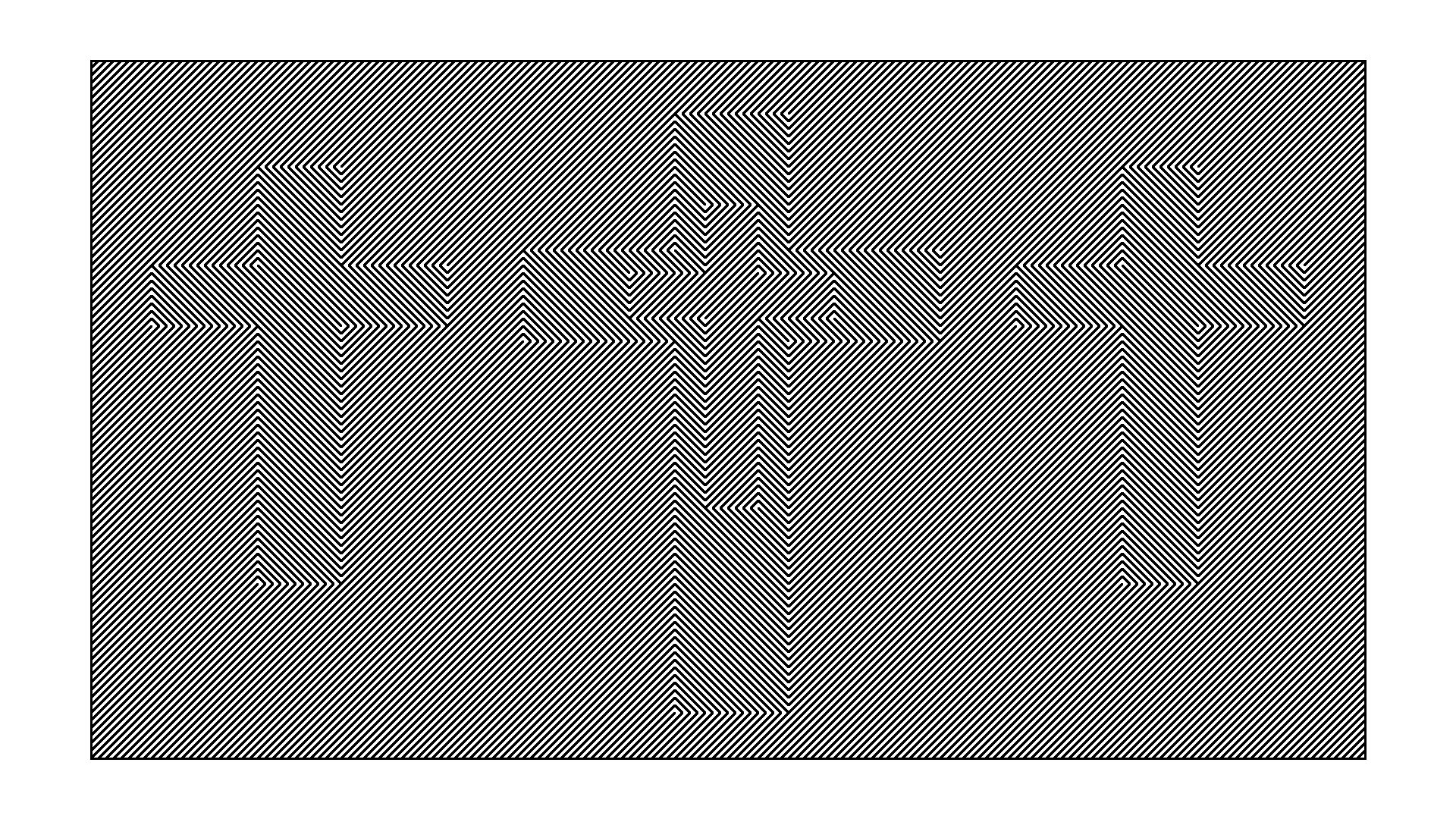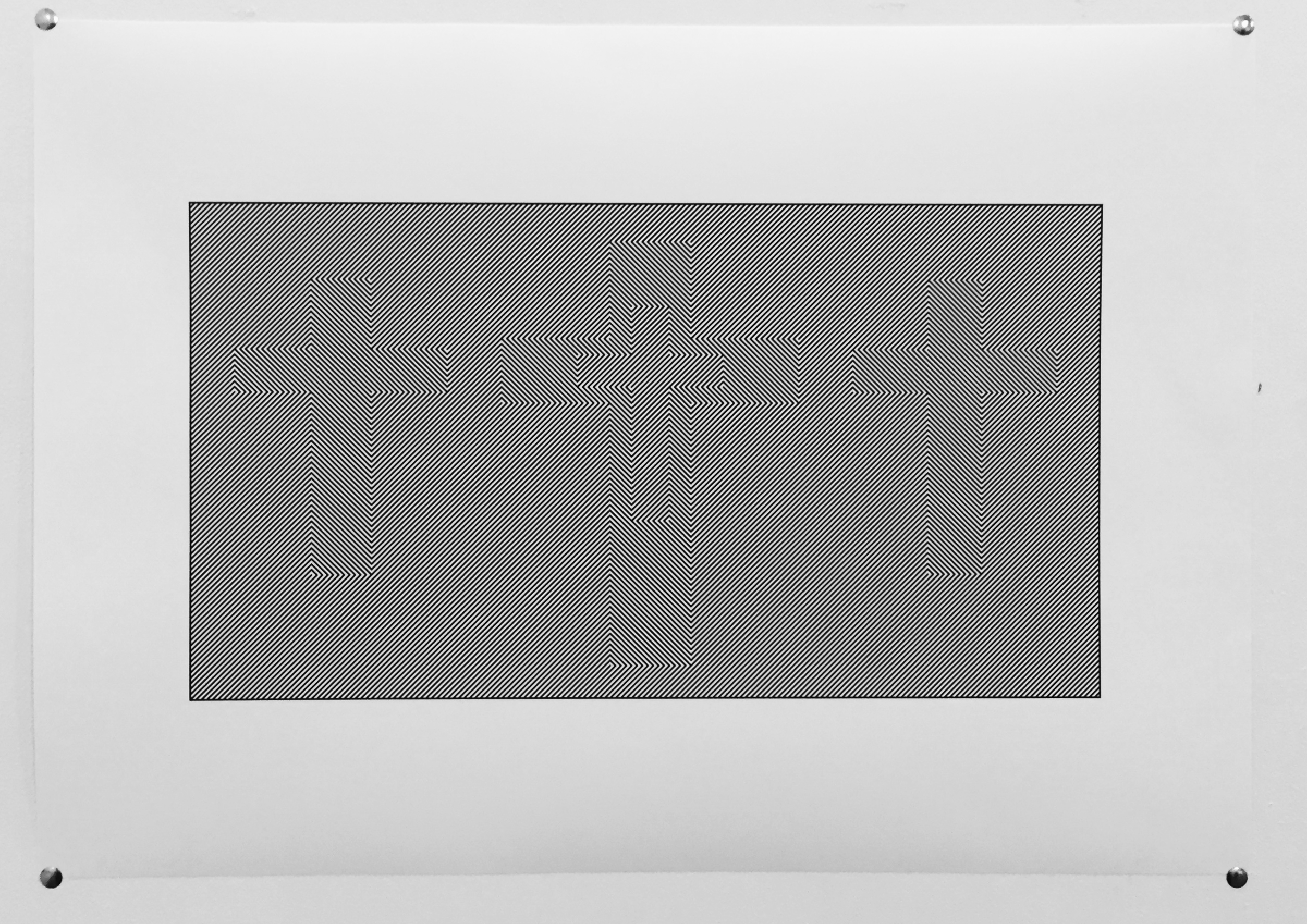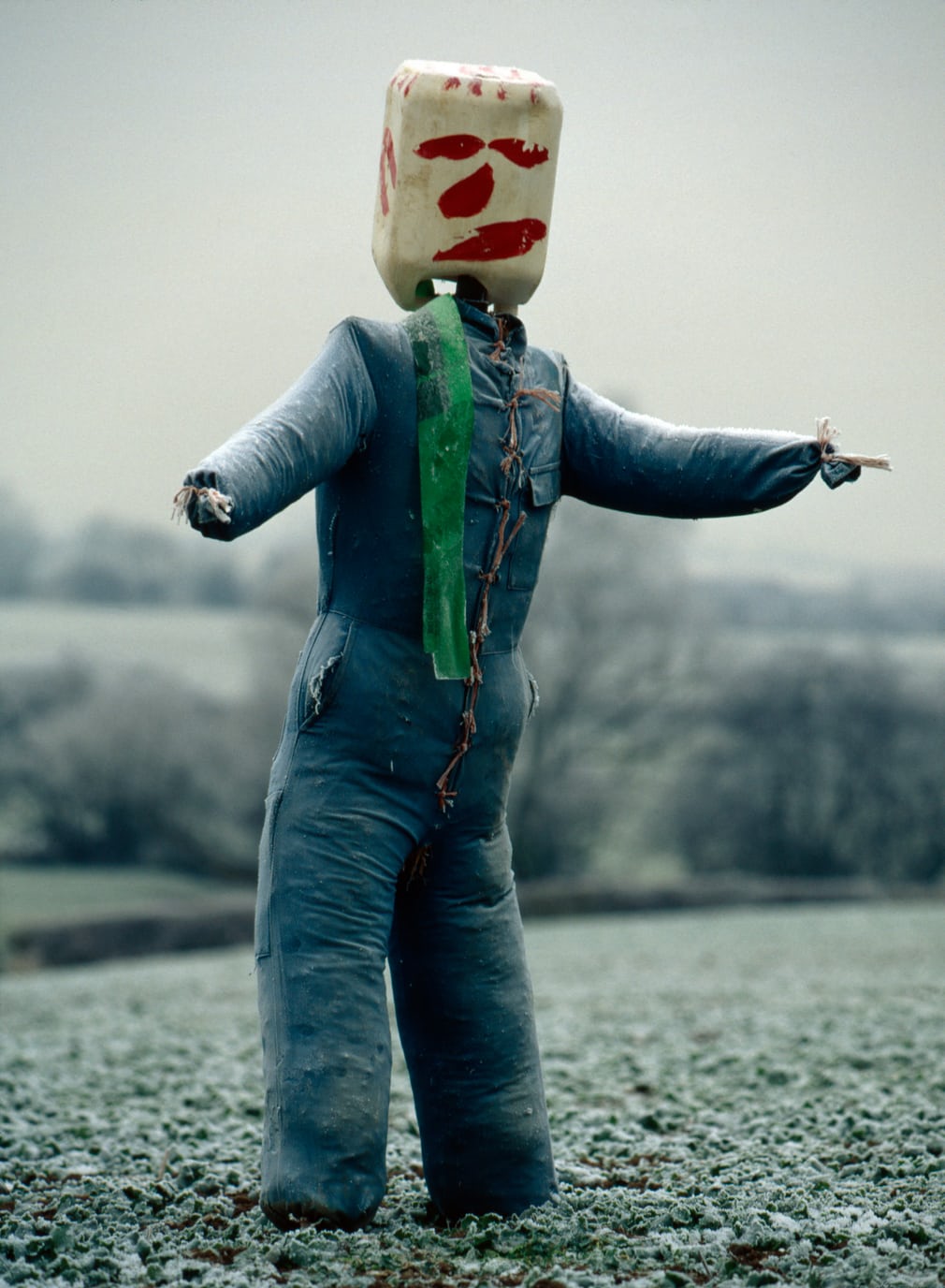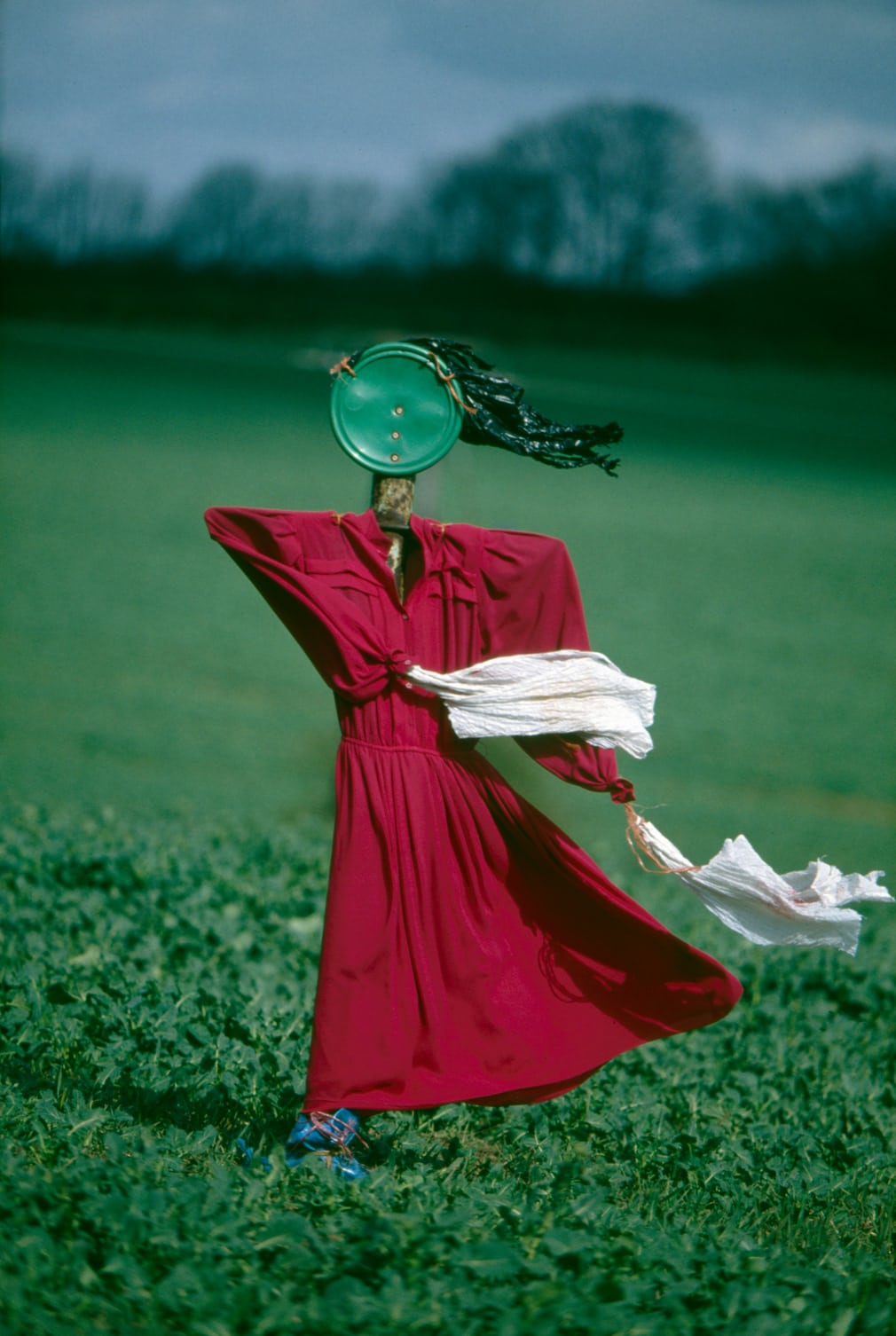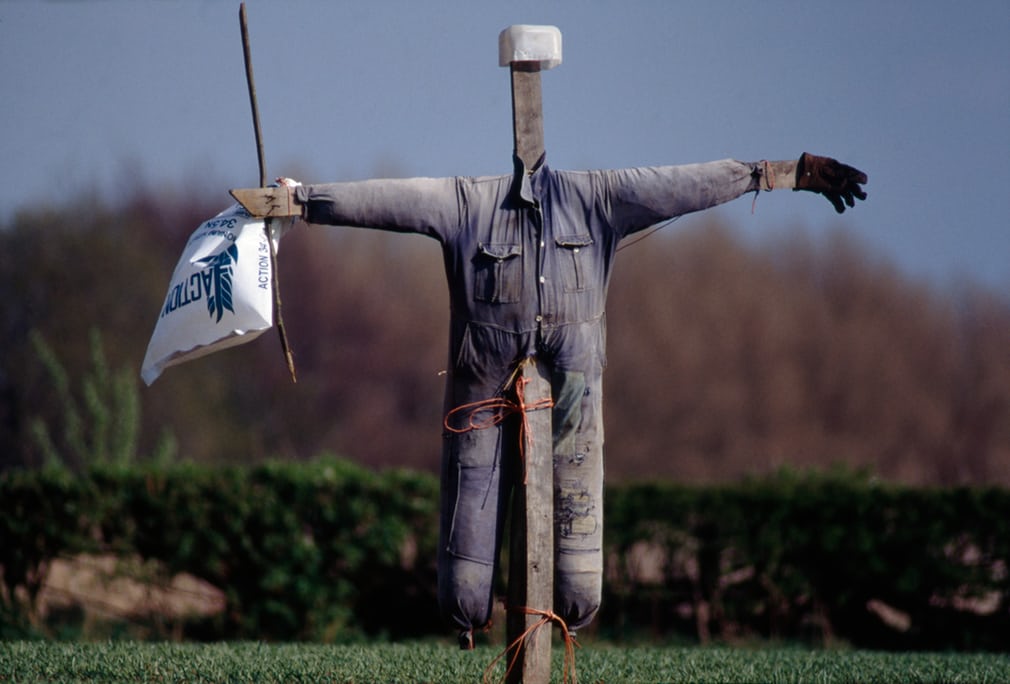Jack of Straw
A geometric optical illusion made in Processing which when viewed at different angles, reveals the images of three scarecrows standing in a field.
produced by: Joseph Rodrigues Marsh
Concept and background research
My intention with this piece was to create an optical illusion that fluctuates when viewed from different angles and distances. I was inspired by the scarecrow photography of Colin Garratt, a British steam train photographer who documented scarecrows across Britain in the 1980’s. In his book ‘Scarecrows’, he discusses the nature and history of scarecrows.
"The scarecrow is a relic of medieval times which continues to haunt the landscape. It seems to appear from nowhere and disappears equally mysteriously.”
Colin Garratt.
In my copy of the book, a note from a previous owner was stuck to the first page;
This relic from another time prompted me to think about my own entry into the 'Church Stretton Annual Summer Scarecrow Festival’ and what it may look like. I began by using Colin Garratt's photography as a data source for my image. I had originally intended to represent a photograph, by occluding the image through a web of lines, that would reveal itself to the viewer as they moved closer, echoing the anthropomorphic appearance of scarecrows from a distance. While experimenting I realised that using complex image data didn’t lend itself well to this technique as the output became quite messy. It was only after some experimentation that I decided to strip back the idea and represent the scarecrow in it’s most abstract form, the skeleton, and through this I was able to achieve more clarity.
Technical
To create this effect I drew a simple skeleton cross shape in Processing and stored the brightness values from the image in an array. I then read those values and used them to determine whether a right slash or left slash would be drawn. When viewed from different angles, the image fluctuates and changes. From a distance a Scarecrow can appear human, but up close it can be seen as its component parts. In the image, a plain texture is visible when viewed from a distance, but as the viewer approaches, the shape and form of the skeleton appears as an apparition. Moving closer still, the component parts which make up the image become visible; simple lines and white space, echoing the humble composition of a traditional scarecrow, merely of rags and sticks. Scarecrows have long been associated with ritual and mysticism, being traditionally used in harvesting rituals such as the summer equinox, and I have tried to represent that through the Scarecrows's resemblance with a cross. I was also conscious about the space in which the image would be viewed, a renovated church, beneath stained glass windows featuring icons of saints and religious imagery.
Self evaluation
Overall I am pleased with the result of my process. The illusion effect was much stronger in the printed image than I had anticipated. Although the print does not translate well to photographs and video, I like how the image appears differently in its various forms. The digital image is clearer and the scarecrows are more prominent whereas in the physical manifestation, the true illusion becomes much more apparent. When presented in a gallery space, the image encourages viewers to move closer and further away, breathing life into the obscured scarecrows and allowing for a physical interaction with a static object.
References
Noise patterns by Ettiene Jacob - https://gist.github.com/Bleuje/85caf5a0324b6b5e717f1b26182cd758
The Scarecrow photography of Colin Garratt (images below)

































































